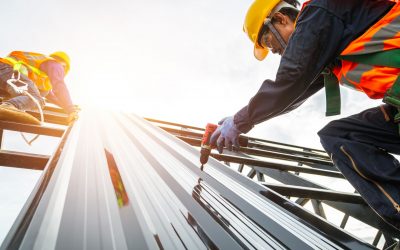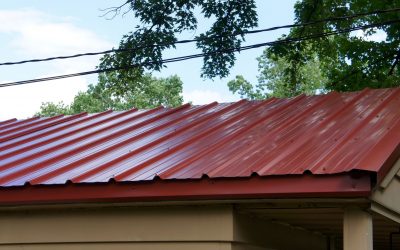Your home’s roof is more than just shingles over rafters, it’s a critical protective envelope that keeps you dry, secure, and comfortable. At some point, even the best-constructed roof will reach the end of its useful life. Recognizing when it’s time for a full roof replacement rather than a repair can save you money, stress, and unexpected damage down the line.
In this article we’ll walk you through everything you need to know about roof replacement, from signs your roof is failing, to selecting materials, to budgeting and working with a professional. With clear, friendly guidance, you’ll gain the confidence to move forward.
Recognizing the Signs: When to Replace Rather Than Repair
- Age is a major factor
Most residential roof systems start showing real signs of degradation after about 15-25 years, depending on materials, climate, installation quality and maintenance. If your roof is nearing or past that age, a roof replacement is often a smarter choice than continuous repairs.
- Repeated leaks or damage
If you’re constantly patching leaks, replacing shingles, or dealing with storm damage, that’s a strong indicator that the underlying system may be compromised. At that point, a full roof replacement ensures you’re not just treating symptoms.
- Visible wear and major material failure
Look for curling or buckled shingles, large numbers of missing shingles, significant granule loss on asphalt shingles, or rust and displacement on metal roofs. These are clear signs the roof may no longer perform as designed—and are strong reasons to consider a roof replacement.
- Structural issues, sagging or decking damage
When you inspect your attic or interior ceilings you might notice water stains, rot, sagging decking or structural issues. These indicate damage beyond cosmetic repairs. A proper roof replacement can address those underlying issues, not just the surface symptoms.
- Energy and comfort issues
If your home is less comfortable than it used to be or you’re seeing high energy bills, your roof system (including ventilation and insulation) may no longer be functioning optimally. A full replacement gives you the opportunity to correct hidden deficiencies and increase performance.
The Roof Replacement Process: What to Expect
- Initial inspection and assessment
The process begins with a thorough inspection of your existing roof system: shingles or metal panels, underlayment, decking, flashing, ventilation, gutters and drainage. The goal is to identify what can be salvaged (if anything), what needs full replacement and any hidden damage.
- Choosing materials and system components
A roof replacement isn’t just about picking a color of shingle. You’ll want to consider:
- Shingle vs metal vs tile or other specialty materials
- Underlayment type and quality
- Flashing, vents, ridge caps, gutters and downspouts
- Ventilation and attic insulation upgrades
- Removal of old roofing vs overlay options (where permitted)
- Permits, prep and removal
Depending on your local code, a full roof replacement may require a permit. Then the job typically proceeds with removal of the old roofing materials (if needed), inspection and repair of the decking/sub-structure, installation of underlayment and ventilation components, and finally installation of the finished roofing material.
- Quality installation matters
Even the best materials won’t perform if poorly installed. Critical steps include proper nailing pattern, correct flashing around chimneys/vents/skylights, adequate ventilation, and a clean jobsite. A professional roof replacement done right provides long-lasting protection.
- Final inspection and warranty hand-over
Once the installation is finished, a final inspection ensures everything meets manufacturer and local code standards. The homeowner should receive documentation on warranties (material and workmanship) and any maintenance instructions.
Material Options for a Roof Replacement
- Asphalt shingles
The most common option for many U.S. homes thanks to affordability and proven performance. They come in various grades, color choices and expected lifespans.
- Metal roofing
Metal roofs offer durability, longevity (often 50 years or more) and better energy performance (reflectivity, lower heat absorption). They’re ideal for homeowners looking for a long-term investment.
- Tile, slate or specialty materials
These premium materials (e.g., clay tile, slate, synthetic slate) carry higher upfront cost but often offer exceptional aesthetics and durability. A roof replacement using these materials may require additional structural support.
- Underlayment and ventilation upgrades
No matter the surface material, the underlayment and ventilation system play a critical role in roof performance. Upgrading to a higher‐quality underlayment and ensuring appropriate ventilation can extend the life of your new roof significantly.
Benefits of a Quality Roof Replacement
- Enhanced home protection
A properly installed new roof system ensures your home is better protected from weather, leaks, wind damage and structural deterioration.
- Increased energy efficiency
Upgrades in underlayment, ventilation and reflective materials can reduce heating and cooling costs, making your home more comfortable year-round.
- Better curb appeal and resale value
A fresh, high‐quality roof not only improves the look of your home but also boosts its market value, especially if you plan to sell in the future.
- Peace of mind and fewer repairs
Once the roof replacement is done right, you can stop worrying about ongoing patch-jobs and start enjoying a long-term solution with lower maintenance.
Maintenance after Your Roof Replacement: What You Need to Do
- Regular inspections
Even after a roof replacement, schedule a visual inspection at least annually, and after major storms. Check for loose shingles, damaged flashing or clogged gutters.
- Keep gutters & drainage clean
Debris, leaves and branch accumulation near your roof can trap moisture, reduce ventilation and shorten the life of your new roof system. Clean and inspect regularly.
- Attic and ventilation checks
Ensure your attic remains properly ventilated and insulated. Poor attic conditions negate many of the benefits of your roof replacement.
- Promptly fix minor issues
If you notice a minor problem after your roof replacement, such as a cracked vent boot or a loosened shingle, address it promptly. Small issues left unattended can lead to bigger damage.
- Keep installation documents and warranties safe
Store your warranty documents, inspection reports and contractor contract in a safe place. You may need them in future for resale or warranty claims.
The Smart Homeowner’s Checklist for Roof Replacement
- Hire a licensed, insured and experienced roofing contractor
- Obtain at least 2-3 detailed estimates
- Verify material manufacturer warranty and confirm installer certification
- Inspect decking, underlayment and ventilation during the job
- Ensure job includes debris removal, gutter cleaning and post-job inspection
- Receive final documentation: contract, warranty info, inspection report, maintenance guidelines
- Store all paperwork safely for future resale or warranty claims
- Schedule regular annual inspections and keep your new roof system maintained
Ready to Replace Your Roof with Confidence?
Replacing your roof isn’t just another home project — it’s an investment in safety, comfort, and long-term value. With the right materials and expert installers, you can protect your home for decades while improving its look and efficiency.
Don’t leave your home’s protection to chance. Partner with trusted roofing professionals who bring skill, precision, and care to every installation.
Contact Quick Roofing today to schedule your free roof inspection and discover how our expert team can help you upgrade your roof with confidence.




